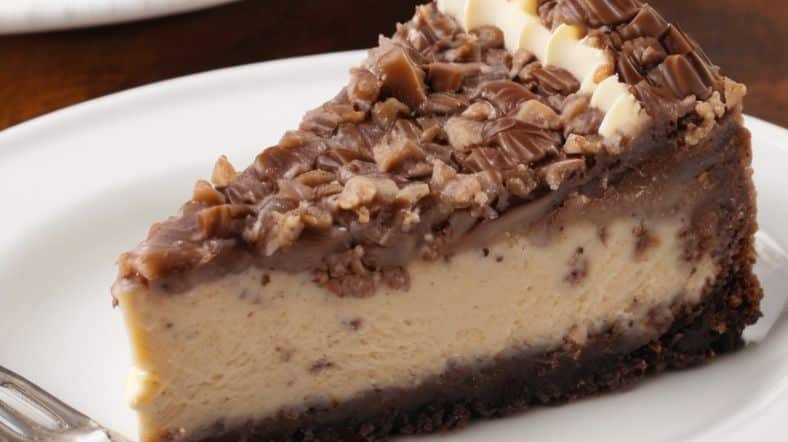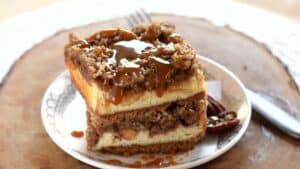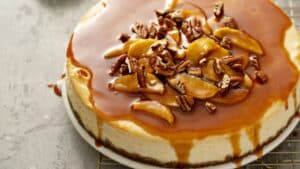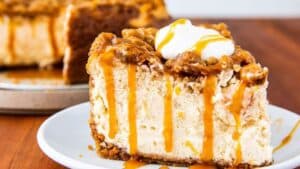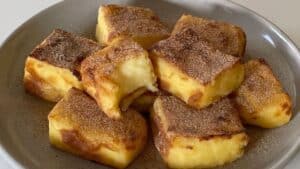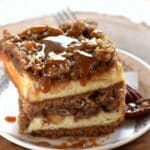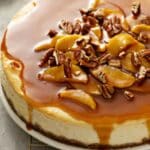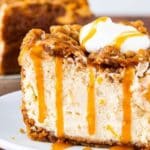Decadent German Chocolate Cheesecake Recipe
The name alone drips with drama German Chocolate Cheesecake. It’s rich, chaotic, unapologetically indulgent. Not something you slap together on a Sunday whim. This is a dessert that demands attention, respect, and a good three hours on the clock. For pastry chefs, advanced home bakers, and culinary pros who want a killer centerpiece this is your golden ticket.
This isn’t just cheesecake. It’s a feast of textures and contrasts. Silky chocolate filling. Sticky coconut-pecan topping. Buttery Oreo crust that crumbles just right. And no, this isn’t your grandma’s jello-cake hybrid pretending to be a cheesecake. We’re talking about a fully-baked, structurally sound, flavor-layered marvel of engineering.
This article breaks it all down. The science, the craft, the unexpected pitfalls. I’ll give you the methods that actually work in a pro kitchen plus a few tricks you won’t find on your average food blog.
The Misunderstood Origins of German Chocolate Cake (And Why It Matters)
Let’s get one thing outta the way. German Chocolate Cake isn’t German. It’s American Texan, actually. Named after Sam German, the guy who developed a sweet baking chocolate for Baker’s Chocolate in the 1850s. So no it’s not from Bavaria, and there’s zero link to Black Forest Cake.
Why does this matter? Because the traditional German Chocolate Cake filling coconut, pecans, and evaporated milk cooked into a custard has a very specific taste profile. It’s nutty, caramel-y, and distinctly not like anything you’d find in traditional European patisserie. This topping, when done right, makes or breaks the cheesecake version.
Breaking Down the Layers: More Than Just a Stack of Sweet
The Crust: Foundation First
Forget graham crackers. They’re too neutral. Too soft. Go with dark chocolate Oreos or a similar crisp chocolate wafer. About 300 grams worth (that’s 30-ish cookies) blitzed in a food processor with 5 tablespoons of melted unsalted butter. Press into a 9-inch springform pan. Real tight. Use a flat-bottomed glass if you want those sides to stand tall.
Why the Oreos? Fat. Sugar. Cocoa. It builds a bridge between the filling and topping. Plus, it can handle moisture without turning into pudding.
Pro tip: Pre-bake it for 10 minutes at 175°C (350°F). Don’t skip this. It sets the crust and helps it hold up under the weight of the filling.
The Filling: Chocolate Cheesecake That’s Actually… Cheesecake
Now here’s the bit that matters most. Your filling needs to be dense, rich, creamy, but with enough structure that it doesn’t slump when sliced.
You’ll need:
- 900g full-fat cream cheese (room temp, or you’re doomed)
- 200g granulated sugar
- 1 tsp vanilla bean paste (not extract—go the extra mile)
- 4 large eggs (room temp, gently whisked)
- 200g sour cream
- 170g dark chocolate (70% cocoa solids), melted and slightly cooled
Cream cheese first. Beat it smooth—no lumps, no weird chunks. Add sugar and vanilla, mix again. Now the eggs—one at a time, and don’t overbeat. You want to avoid incorporating air. That’s how you get cracks. Chocolate goes in last, folded gently with the sour cream.
Pour it into the crust and do the one thing everyone forgets—tap it hard on the counter to release air bubbles. Not gently. Bang it like you mean it.
Then, water bath. Yes, you need one. Wrap the springform pan in heavy-duty foil. Place in a larger pan filled with hot water halfway up the sides. Bake at 160°C (325°F) for 1 hour. Then turn the oven off. Let it sit in there for another hour.
Don’t touch it. Don’t poke it. Let it cool slowly, or you’ll cry over cracks.
The Coconut-Pecan Topping: A Custard, Not a Sauce
Now to the crown jewel. This topping needs body and shine. Not runny. Not grainy. You want it to stick to the cheesecake without dripping down like hot lava.
Here’s what you’ll need:
- 200ml evaporated milk
- 100g granulated sugar
- 100g brown sugar
- 3 large egg yolks
- 85g unsalted butter
- 1 tsp vanilla extract
- 150g sweetened shredded coconut
- 100g chopped pecans (toasted, always toasted)
Whisk the milk, sugars, and yolks in a saucepan over medium heat. Stir constantly. Don’t walk away. It thickens fast and burns even faster. Add the butter and cook until the mix coats the back of a spoon—about 5–7 minutes.
Remove from heat. Stir in the vanilla, coconut, and pecans. Let it cool until it’s spreadable but still warm.
Spoon it gently over the chilled cheesecake. Don’t press it in. Let gravity and surface tension do their thing.
Optional, but elite: Drizzle with ganache—equal parts cream and dark chocolate melted together. A little glossy flourish goes a long way.
The Science of Cheesecake: Why This One Works
Cheesecake’s all about balance—fat, sugar, eggs, and temperature. Screw one up, and the whole structure collapses. This recipe holds up because:
- High-fat cream cheese gives density.
- Sour cream adds acidity and softness.
- Eggs set the structure, but too many = rubbery texture.
- Slow baking and cooling prevent cracking.
- Water bath ensures even heat, avoiding overcooked edges.
One 2021 food chemistry study published in LWT – Food Science and Technology noted that using sour cream in baked cheesecake formulas increased emulsion stability and texture resilience during refrigeration cycles. So yes—your sour cream is doing more than adding tang.
Common Mistakes (And How to Dodge ‘Em Like a Pro)
Overmixing. It’s the number-one cheesecake killer. You add air, it rises like a soufflé, then collapses like your dreams. Always mix on low.
Skipping the water bath. You think you’re saving time. What you’re really doing is ruining dinner. Dry cheesecake is a tragedy.
Using cold cream cheese. It won’t mix evenly. You’ll end up with lumpy batter and uneven bake.
Forgetting to toast the pecans. This isn’t optional. Raw pecans taste flat. Toasted ones unlock layers of flavor you can’t fake.
Variations That Actually Work (No, Not Pumpkin Spice)
For professionals, staying creative is key. Here’s what works without destroying the essence of the cake:
- Bourbon caramel swirl in the filling. Adds depth and plays well with the topping.
- Salted pretzel crust for contrast and crunch.
- Espresso powder in the chocolate filling to enhance bitterness.
But please—leave out the raspberries and mint sprigs unless you’re stuck in 2003.
Shelf Life, Storage, and Serving Strategy
Refrigerate for up to 5 days. Keep it tightly wrapped. Best served after 12–24 hours of chilling—the flavors mellow, the texture firms up.
Freezing? Yes, you can. But freeze without the topping, then add it fresh when thawed.
Slice with a hot knife, wiped clean between each cut. This isn’t your average sheet cake—it deserves precision.
Final Thoughts: Make It Worth the Calories
This isn’t just a dessert. It’s a commitment. To texture. To layering. To old-school technique meeting modern taste. It’s not the fastest bake in the book, but it might just be the one people remember you for.
If you’re in a professional kitchen, this is a showstopper for catered events or upscale menus. For passionate home bakers—it’s your once-a-season signature.
There are faster recipes. Easier ones. But none that hit quite like this.
Key Takeaways
- Use Oreo-based crust for flavor and structure.
- Baked filling with real dark chocolate gives richness and depth.
- Don’t skip the water bath or the slow cool.
- The topping is a custard, not a frosting—treat it with care.
- This is a recipe of intention. Do each step right, or don’t bother.
It’s not just a German Chocolate Cheesecake. It’s the German Chocolate Cheesecake.
And once you make it right? You’ll never make it just “good enough” again.
